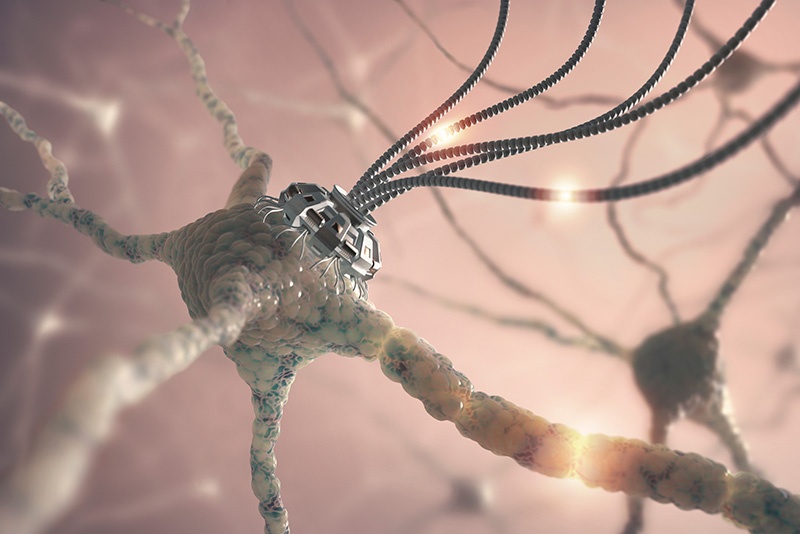Why it’s Change or Die in the Brave New Biodigital World

The Third Wave, which ushered in an era of realities like global hyper-connectivity, disintermediation, big data, and digitally driven collaboration, is ‘cresting’ toward another major disruption. With this incredible progress in how we break down barriers and interact have come new challenges in how we mitigate the risks that threaten that progress.
We expect the next major disruption likely will be bio-digital convergence. Where digital and organizational boundaries are blurred, we will see progress made by fusing people and technology, truly integrating technology and not simply augmenting human capabilities.
Of course, examples already exist. In fact, we took a deep dive into the opportunities and risks of bio-digital convergence earlier this year. At this point, we’re hurtling toward a brave new world shaped by things like AI, biotechnology, and quantum computing used to enhance human capabilities. Change is coming faster than ever, and the long-term outcomes are hard to predict.
The coming bio-digital convergence only highlights the importance for organizations to get out of reaction mode and be future focused. Take the time to evaluate what your company is on a larger scale. Think beyond what you do now and discern how the new convergences will impact your ability to Future Proof® the organization. Building resiliency to change is not easy, but it’s even harder if you resist new thought paradigms and don’t consider the possibilities of tomorrow’s technology.
This is more than an organization-level acknowledgment of transformation to drive innovation. This is a human-level acknowledgment that resistance to change is part of our nature and without conscious awareness to alter our accepted norms, our organizations will fail.
We expose ourselves to the risks that come with hyper-connection and human/machine interaction because we see how it augments our capabilities for the better. You only need to look to articles that tell of AI in the boardroom or cognitive financial investing to know that new ways of doing business are here to stay. Whether or not we’ve pursued change in the past is irrelevant to the tomorrow if we are ready to embrace and consider how we can leverage disruptive technologies and innovations to improve how our people and organizations perform.
Case in Point: Darktrace – The 2016 ‘Best Security Company of the Year’
In 2013, a team of former members of the British Intelligence Agencies MI5 and GCHQ entered the $75 billion cybersecurity industry with a company called Darktrace and its new technology, the Enterprise Immune System (EIS). What makes EIS unique – and uniquely powerful – is that it melds bio-digital convergence, machine learning, and threat protection.
Darktrace explains that EIS uses “new machine learning techniques based on the biological principles of the human immune system” and “advanced mathematical models to establish an evolving understanding of every device, user, and network and stay ahead of developing APTs, insider attacks and other live threat scenarios.” What that means is that EIS works within the system, continuously scanning networks to identify anomalies in systems and releasing defenses the moment a threat is perceived – in much the way that the human immune system puts out antibodies to attack invasive cells.
So rather than trying to create a barrier to threat actors, as most cybersecurity measures endeavor to do, Darktrace acknowledges that most companies are working a step behind. EIS works within the system to provide constant monitoring that learns and adapts to its environment, providing more and more pervasive threat protection over time.
In doing so, Darktrace has done two particularly noteworthy things. First, they’ve applied human to technology rather than the other way around, creating a new kind of bio-digital convergence. They’ve also introduced unsupervised machine learning – a scary notion to many change adverse thought paradigms. Traditional cybersecurity machine learning is supervised – algorithms are taught to discern between safe and abnormal data. Unsupervised machine learning learns on its own from its environment.
Darktrace is an award-winning company for a reason. They took a disruptive concept and flipped it. Rather than seeing how technology could augment human performance, they looked at how a human model could improve the performance of a technology. In doing so, they created a more effective form of threat mitigation that permeates every corner and compartment of the entity it’s protecting.
We know more stories of entities that resisted change and found their back up against the ropes. (Consider how machine learning, automation, and the Internet unraveled the stock brokerage industry.) As we ride the Third Wave into the next, one of the most important transformations we can make is to do away with our inherent human resistance to change. Doing so will enable our minds to think differently and innovations to advance humanity, business, economies, and society.
It’s time to shift our thought paradigm to embrace change and imagine the possible.
{{cta(‘befa9ff3-80a5-4a6c-b483-9daadb37b099’)}}
Source Article:
This Security Company Based Its Tech On The Human Immune System, Fast Company Magazine, September 2016 Issue

 About the Authors
About the Authors